
Butterfly Bank - Identification Guide
This bank is an illustration of the importance of biodiversity. We now have 50 different plant species growing here because some butterflies and pollinators are dependant on only a few, sometimes only one, species for their eggs. They also need nectar and pollen for food. We have plants like the Cowslip which flower in early spring, right through to the Yarrow which last year was still flowering on the bank on Christmas Day. The bank has been really popular with Lepidoptera and pollinators during the spring and summer.
When you have got to know the plants on the Butterfly Bank, have a go at this quiz.
(All comments welcome - let us know if you can't find any of the answers.)

|
Butterfly Bank Flower Quiz.pdf Size : 120.17 Kb Type : pdf |
that the following 13 species were still flowering on 17th November 2025:
Thyme-leaf Sandwort
Red Campion
Small Scabious
Sawwort
53 species of plants on the BB in 2025 (with date of 1st flowering)
Basil Wild (29 June), Bindweed Field (June), Bird’s foot Trefoil (27 April), Bristly Oxtongue (22 August), Carline Thistle (has not flowered this year), Carrot Wild (early June), Centaury (has not flowered this year), Clustered Bellflower (8 June), Coltsfoot (1 April), Cornflower (19 May), Cowslip (14 March), Creeping Cinquefoil (has not flowered this year), Dropwort (27 May), Dwarf Thistle (30 June), Fairy Flax (25 July), Fox and Cubs (1 June), Greater Celandine (27 April), Harebell (23 May), Hedge Mustard (May), Hoary Plantain (23 May), Horseshoe Vetch (27 April), Kidney Vetch, Red (July), Kidney Vetch, Yellow (27 April), Knapweed (25 May), Lady’s Bedstraw (1 June), Mallow (no flowers yet this year), Marjoram Wild (23 May), Mouse-ear Hawkweed (6 May), Ox-eye Daisy (4 May), Pasqueflower (has not flowered this year), Pansy Wild (1 April), Poppy (3 June), Ragwort (late June), Red Campion (28 April), Rock Rose (27 April), Rough Hawkbit (30 May), Sage Wild (30 May), Sainfoin (13 May), Salad Burnet (29 April), Saw Wort (22 August), Scabious Field (10 April), Scabious Small (9 April), Selfheal (8 June), Soapwort (19 July), Sorrel Common (19 May), St. John’s Wort (23 June), Teasel (unlikely to flower this year), Thyme Wild (1 June), Valerian (19 May), Vervain (18 June), Viper’s Bugloss (30 May), White Stonecrop (22 June), Yarrow (1 June)
Photos below show the BB on 30th August 2025
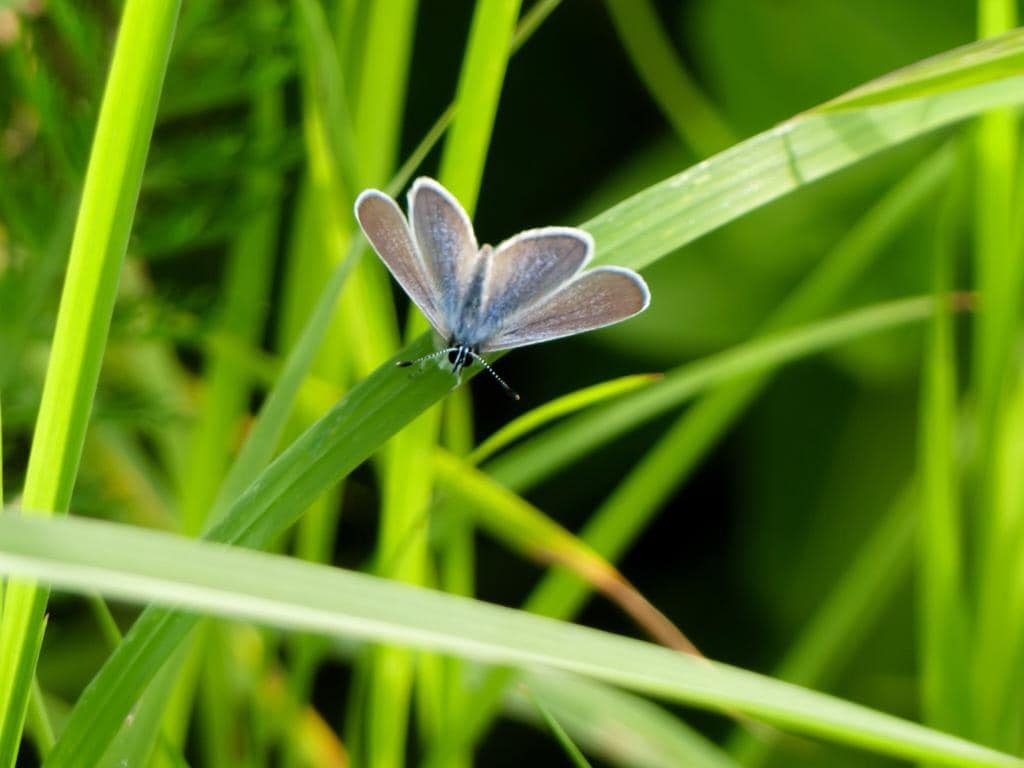
Butterfly Bank - photo above shows a Small Blue on the BB on 23 May 2023
The Brilliant Butterflies Project was set up in 2021 and worked with Croydon Council and local communities to create more wildflower areas for butterflies and other insects. They selected a site in our car park field on which to build a Butterfly Bank. The intention was that when the Project ended in 2022 the maintenance of the BB would be taken on by FSW.
They created a chalk bund in our car park field on 19th April 2021. See the section Creating the Chalk Bank 19 April 2021 below for details of the construction work.
On Sunday 25th April this was sown, by FSW volunteers, with butterfly friendly seeds and planted with 250 small plug plants of various wildflower species (Birds-foot Trefoil, Cowslip, Knapweed (greater & lesser), Ox-eye Daisy, Rock-rose, Scabious, Thyme and Yarrow) to supplement the chalk grassland seed mix. This will help support many species including the Small Blue Butterfly. See the section Planting the Chalk Bank 25 April 2021.
The Kidney Vetch and Marjoram plug plants that should have been included were not available this season so in 2022 the FSW purchased another set of 144 plug plants of Kidney Vetch, Marjoram, Wild Thyme, Rock Rose, Hairy Violet and Small Scabious. These were planted on the BB on a workday on 8th May 2022. See the Workdays page for details.
We were advised that the Butterfly Bank would take a year to establish and 2 or 3 years to thrive. We were assured that the low nutrient chalk would ensure that, thereafter, the wildflowers will last for many years with very little maintenance.
However, by the end of 2023 it was clear that the chalk bunds sited around Croydon were not achieving the objective of keeping down grass and encouraging wild flowers. Our bund was clearly very overgrown with grass with few of the original plants thriving. One of the Friends, Valerie Baldry, knew of a much more successful butterfly bank elsewhere that was not composed of chalk. It was decided that she would work on a small area of our bund, digging out the grass, fertilising with top soil and well rotted manure and replanting with butterfly friendly flowers. This work is described in the 2024 section below.
Please do not walk on the planted area and keep your dogs away.
Entries below show development of the chalk bank in reverse order with the most recent at the top.
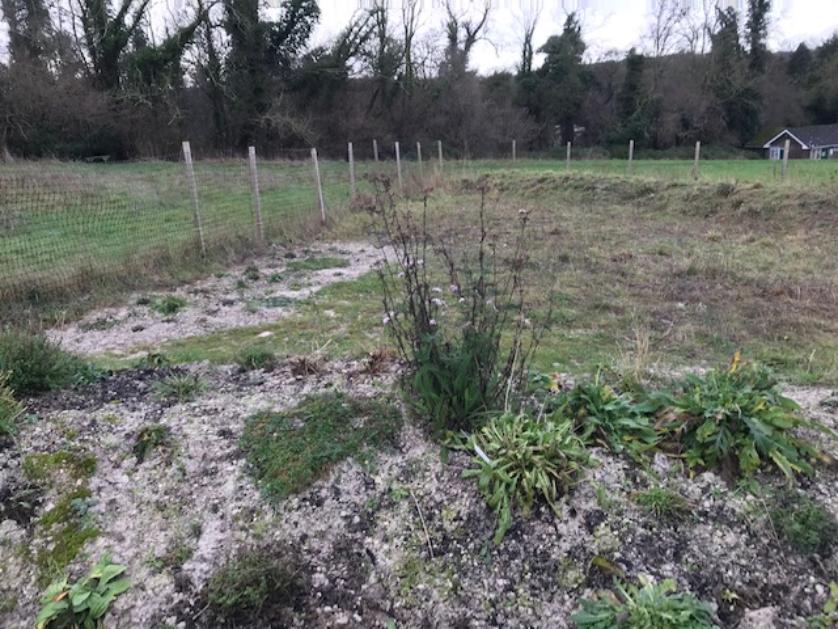

|
BB and LG Plants introduced Spring 2024 2.pdf Size : 249.906 Kb Type : pdf |
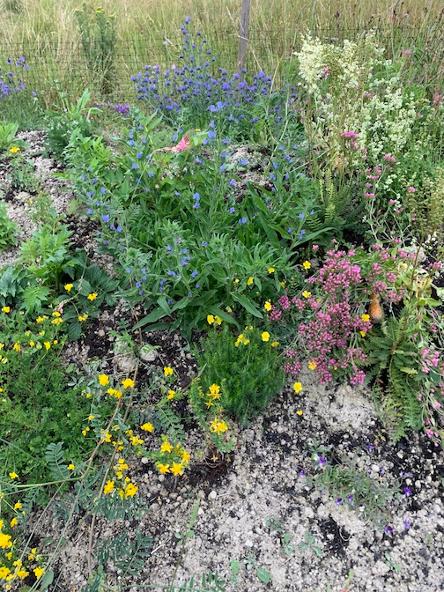
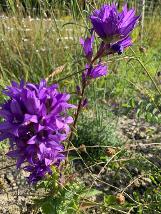
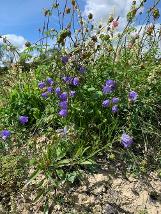
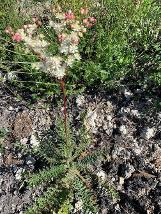
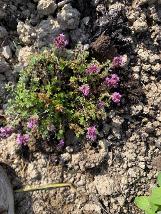
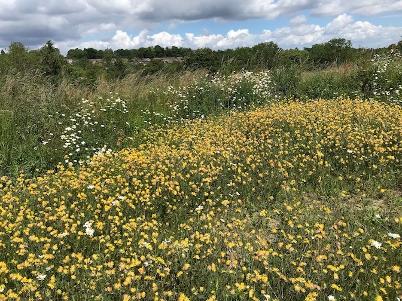
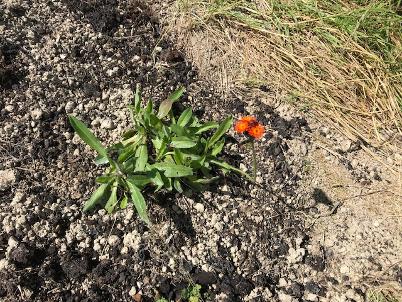

I have now got some Field Scabious and Wild Thyme and planted both into the bank. I am hoping the Field Scabious will have time to grow and flower this year. If not, as it is a perennial, we will enjoy it next year. I am sure the Wild Thyme will flower soon if it settles well in the bank.
There is a lot of interest in the Dropwort flowers from passing walkers. I am not surprised as I think they are lovely and more and more Dropwort flowers are appearing every day.
It is hard work but enormously satisfying. I am benefitting both physically and mentally from what I am doing. If anyone would like to get these benefits for themselves, I would love them to join me.
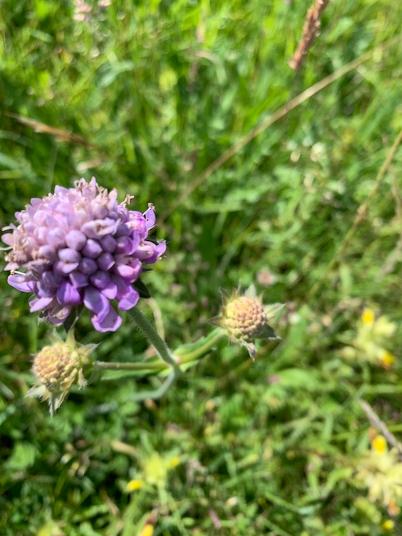
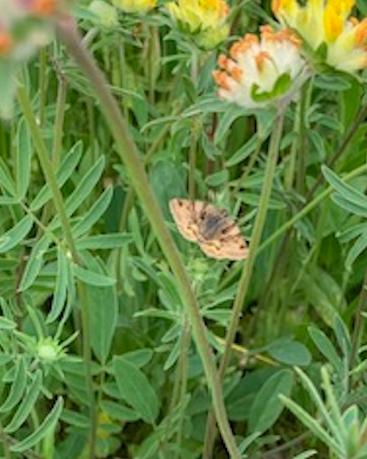
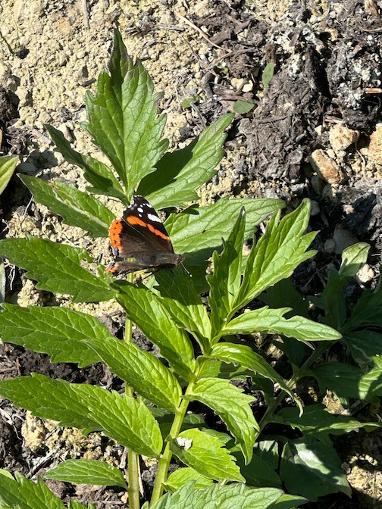
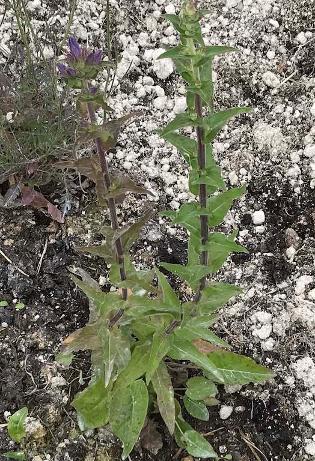
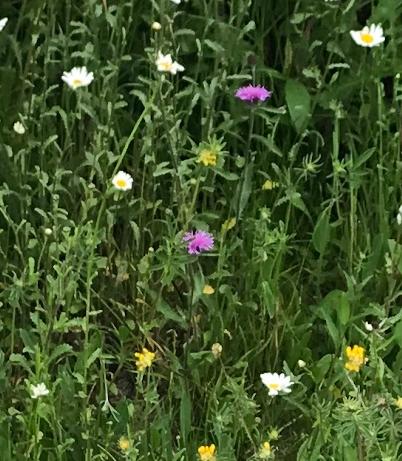
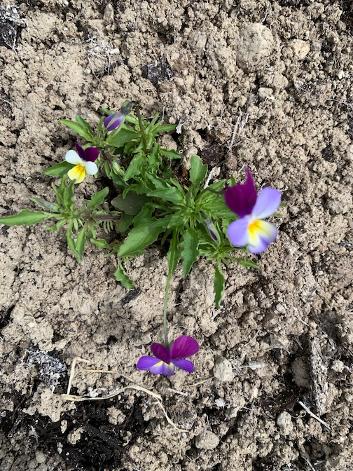
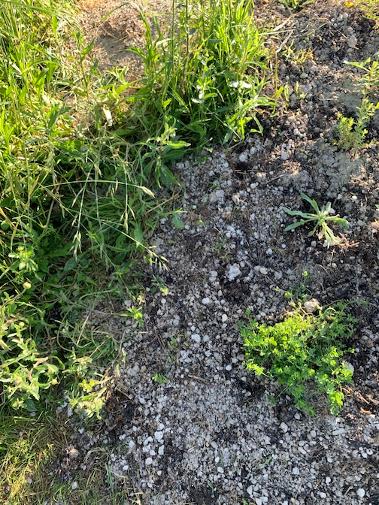
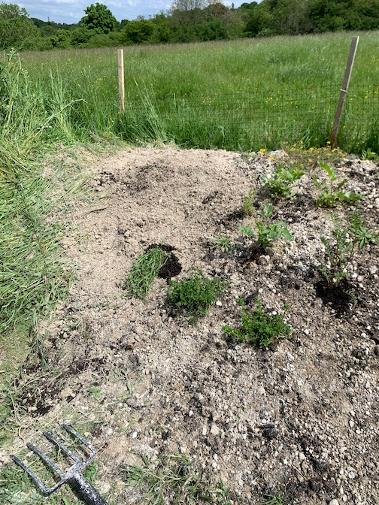
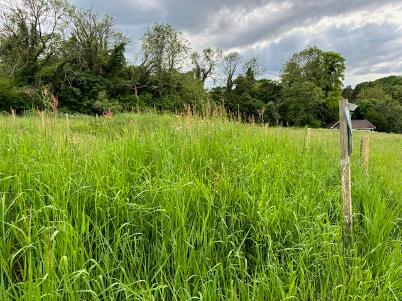
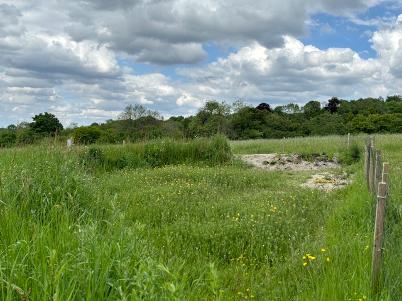
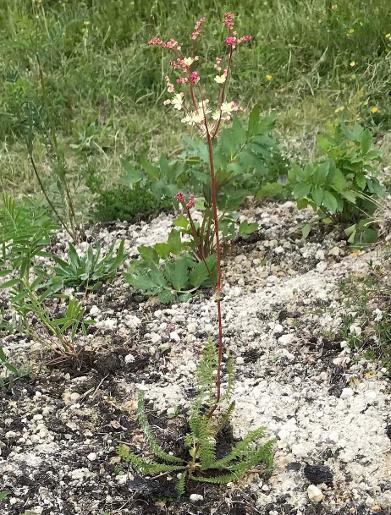
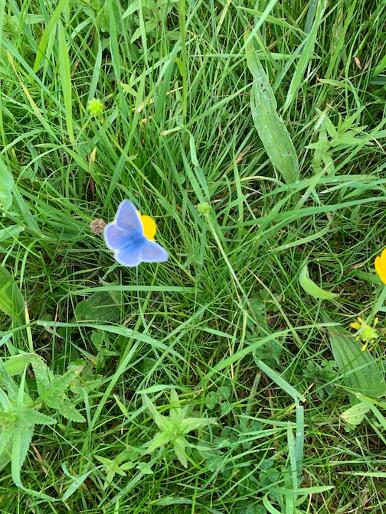
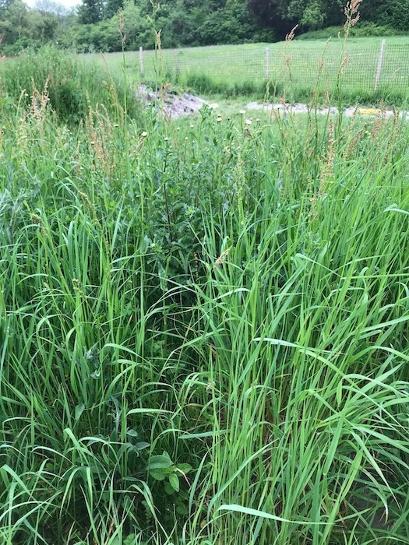
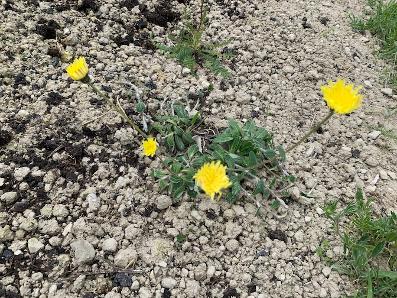
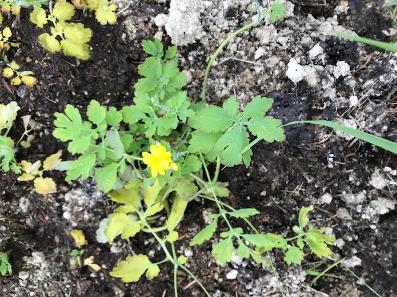
So far nothing has died but fingers crossed. There are also a couple of things that I am not certain about. I will check them again when they are bigger or flowering. I will be adding marjoram as soon as it becomes available and also Sneezewort, Common Harebell, Field Scabious, Fox and Cubs, Pasque Flower, Devil’s-bit Scabious, Wild Thyme, Tufted Vetch and Wild Pansy.
A lot of the bigger plants were free as I transplanted them from my son’s garden.
The Greater Celandines had self-seeded into a path I was weeding so were free but may not survive. The Hairy Violas Ted wants will not be available until next year.
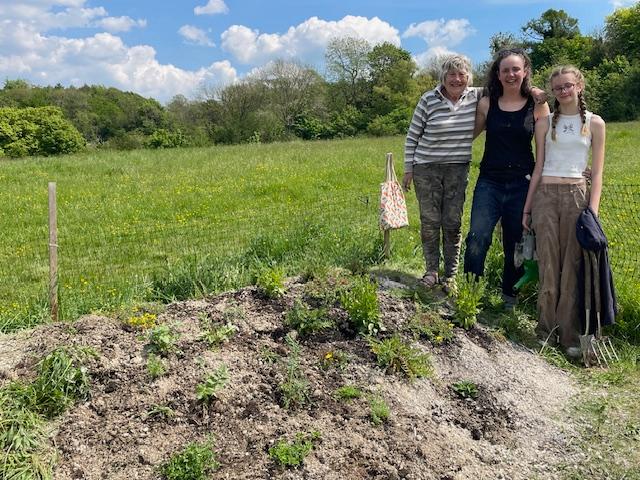
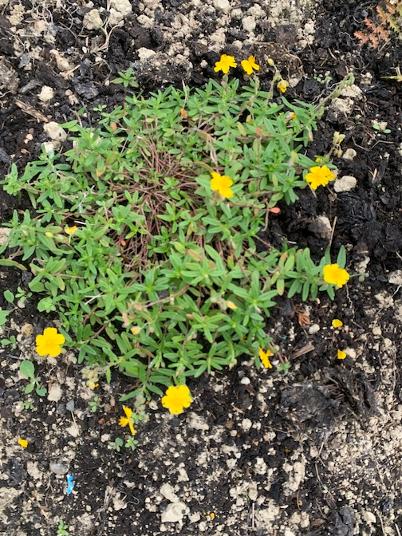
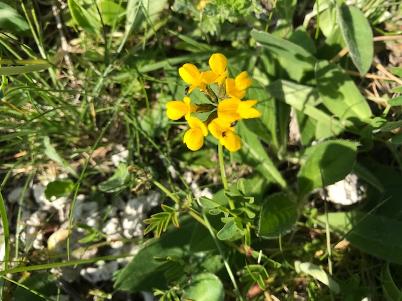
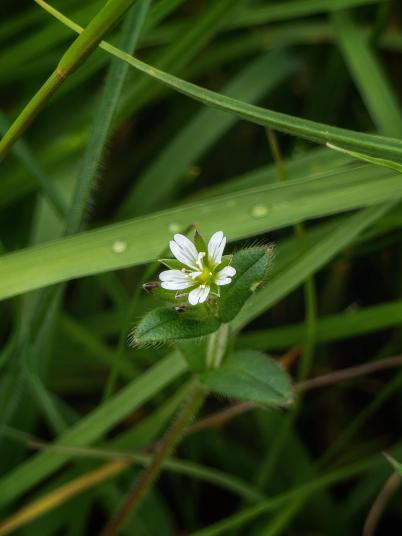
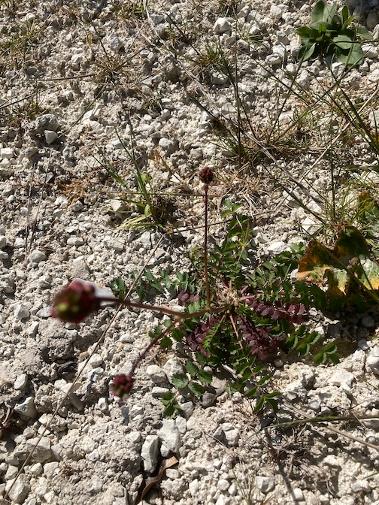
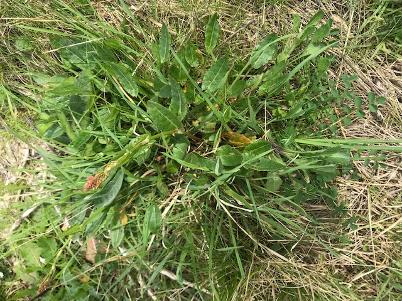
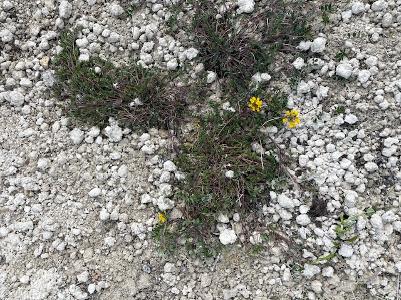
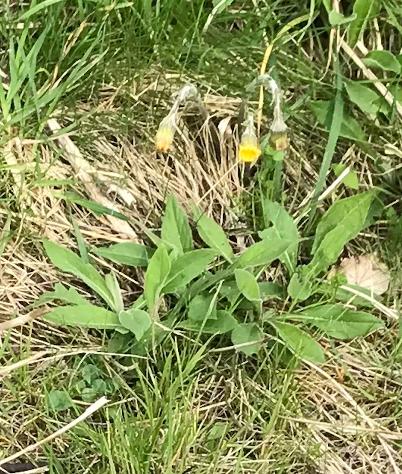
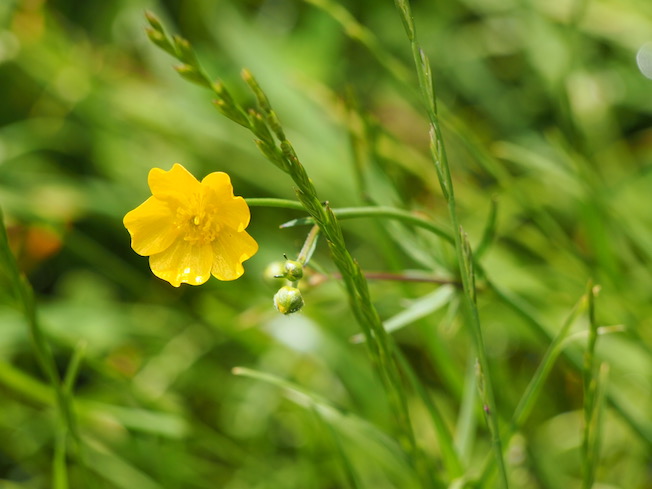
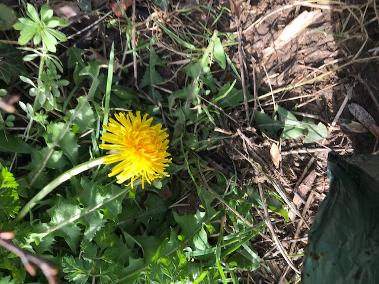
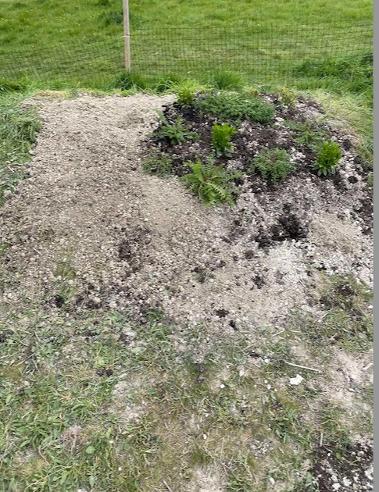
The good news is that the horseshoe vetch which we planted in the flat area is still alive and now has flowers! There are also flowers on the salad burnet. I have purchased 12 more plants from the farm but we did not have the time or energy to put them in today. I bought 3 vipers bugloss, 2 St John’s wort, 2 sainfoin, 1 rough hawkbit, 1 more small scabious, 2 lady’s bedstraw and a bird’s foot trefoil. When we find some more time and energy we will clear another patch and put them in. I am also considering planting two more areas of horseshoe vetch if what I have done with the first patch of three plants continues to work.
We intend to try and relocate to the bund some established plants: 3 centaury, 3 salad burnets, 3 rock roses and a large lady’s bedstraw.
Jenny and I will be working on the bund tomorrow afternoon. We will also be there on Thursday afternoon and I think Kay may be joining us. Kay and I will be working there Sunday morning. Don’t expect any rapid progress though. It is hard work..
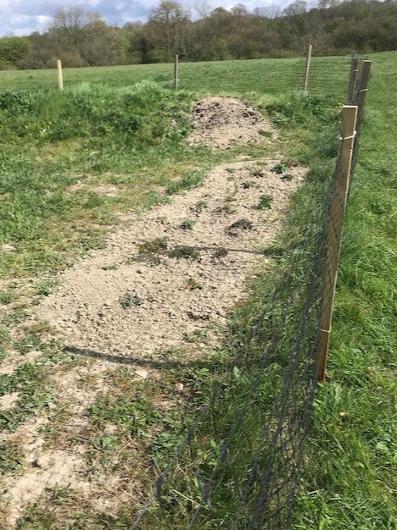
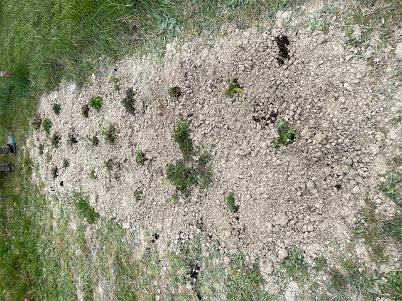
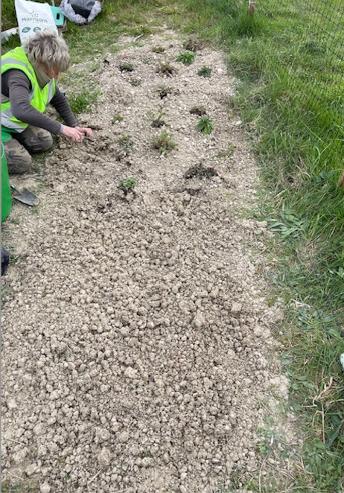
3 Drop Wort
3 Mouse-ear Hawkweed
3 Self Heal
6 Salad Burnet
3 Small Scabious
3 Sawwort (1 later transplanted to Linden Glade)
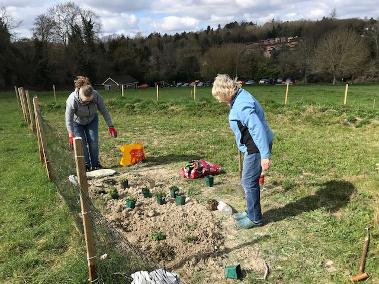
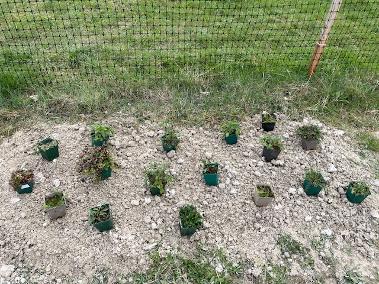
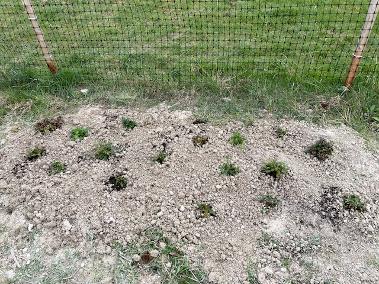
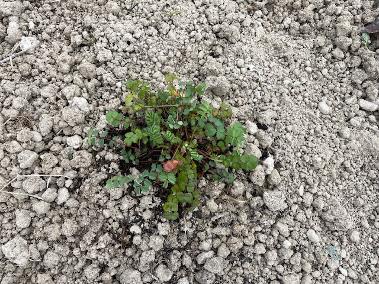
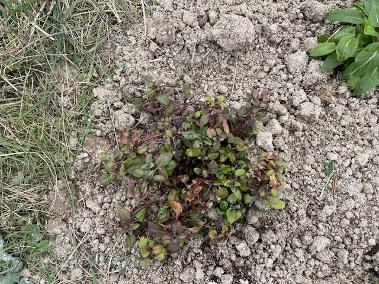
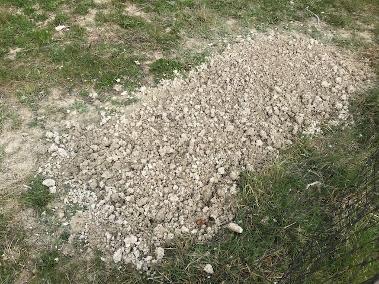
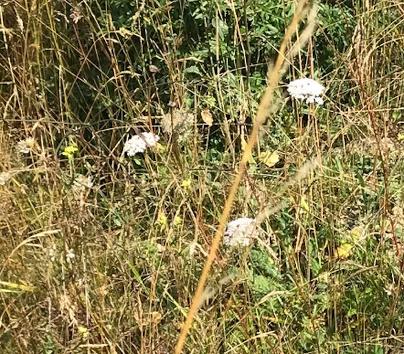
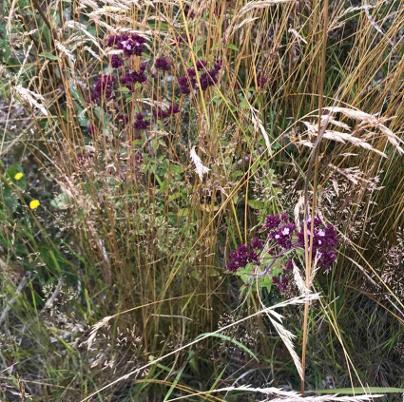
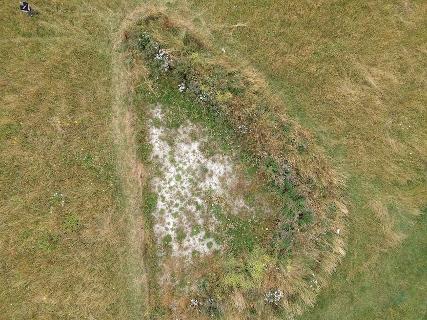
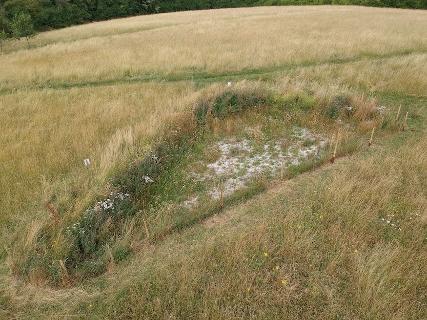
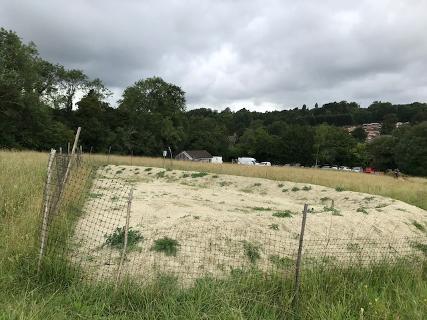
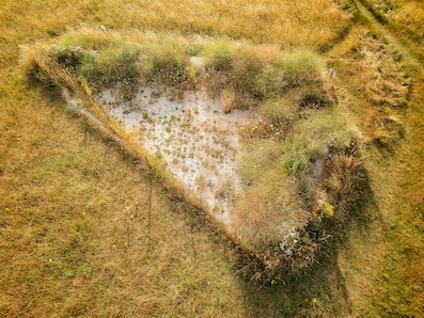
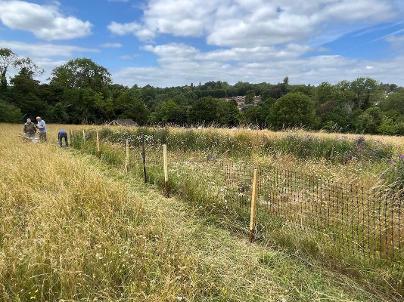
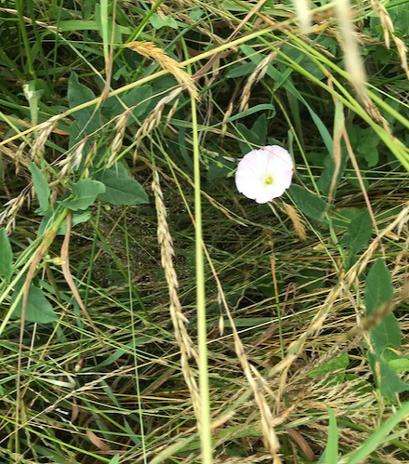
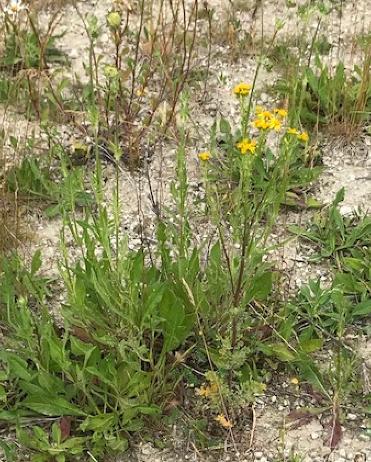
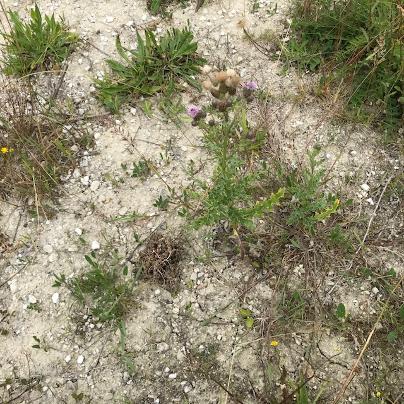
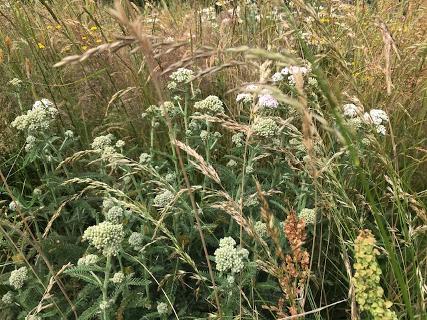
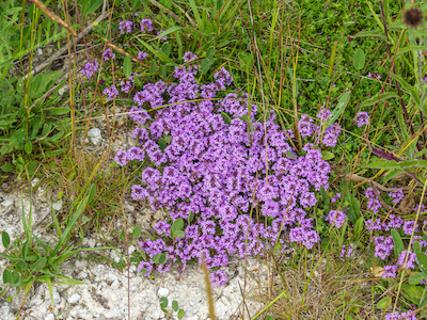
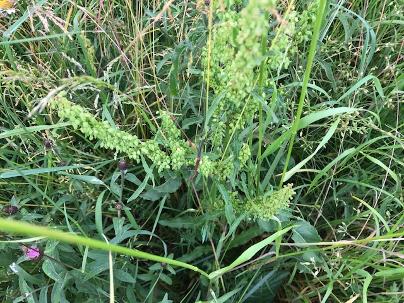
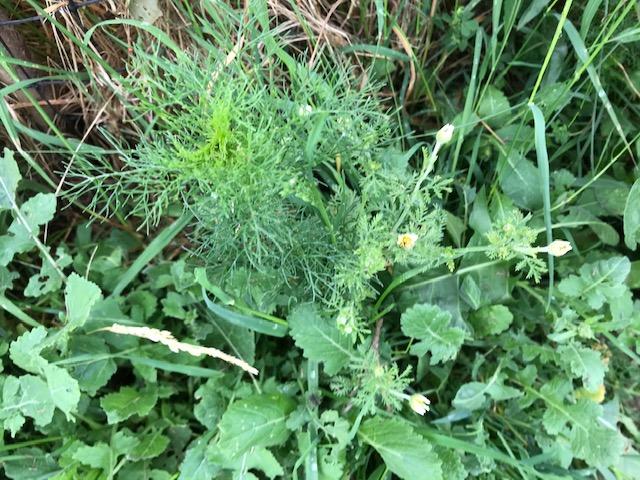
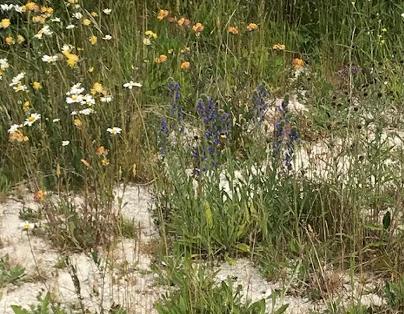
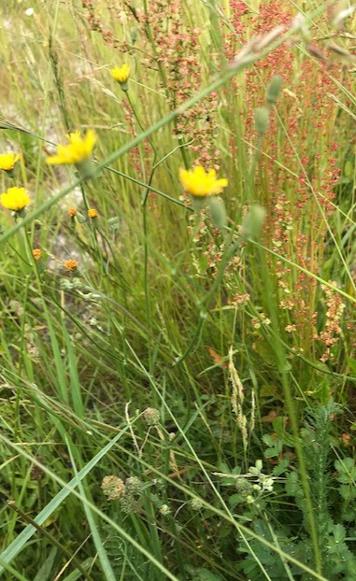
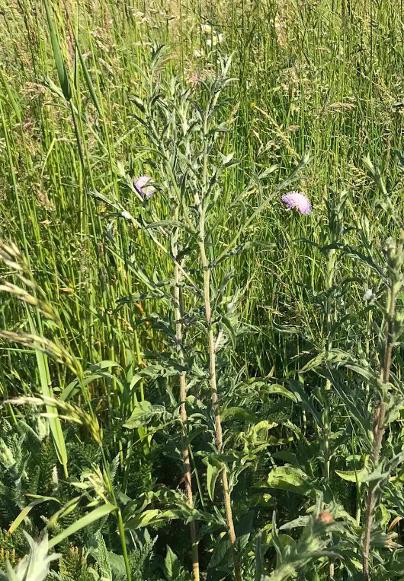
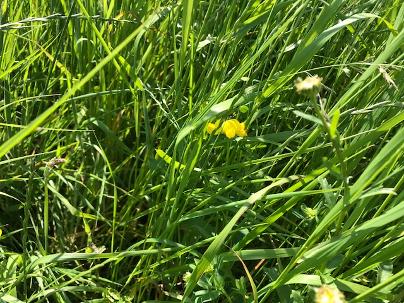
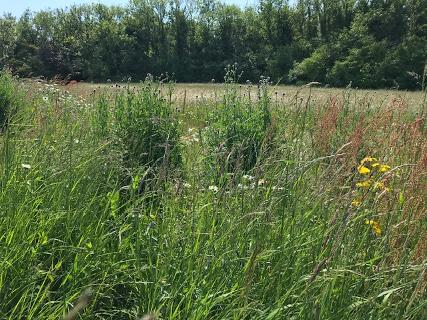
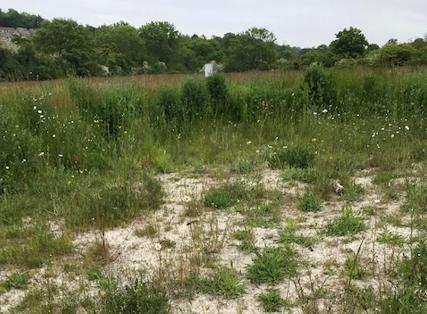
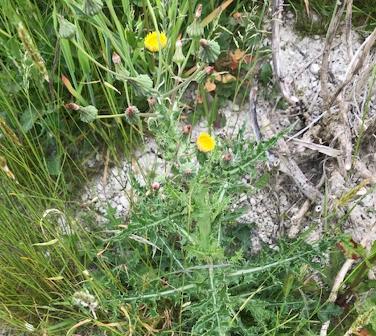
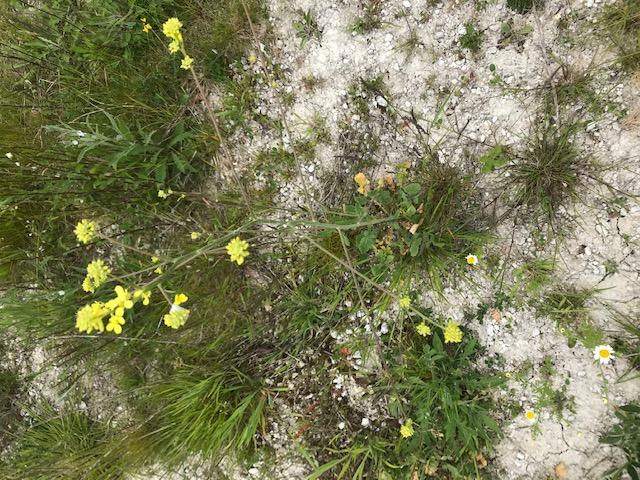
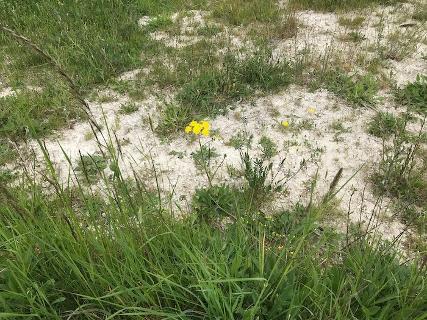

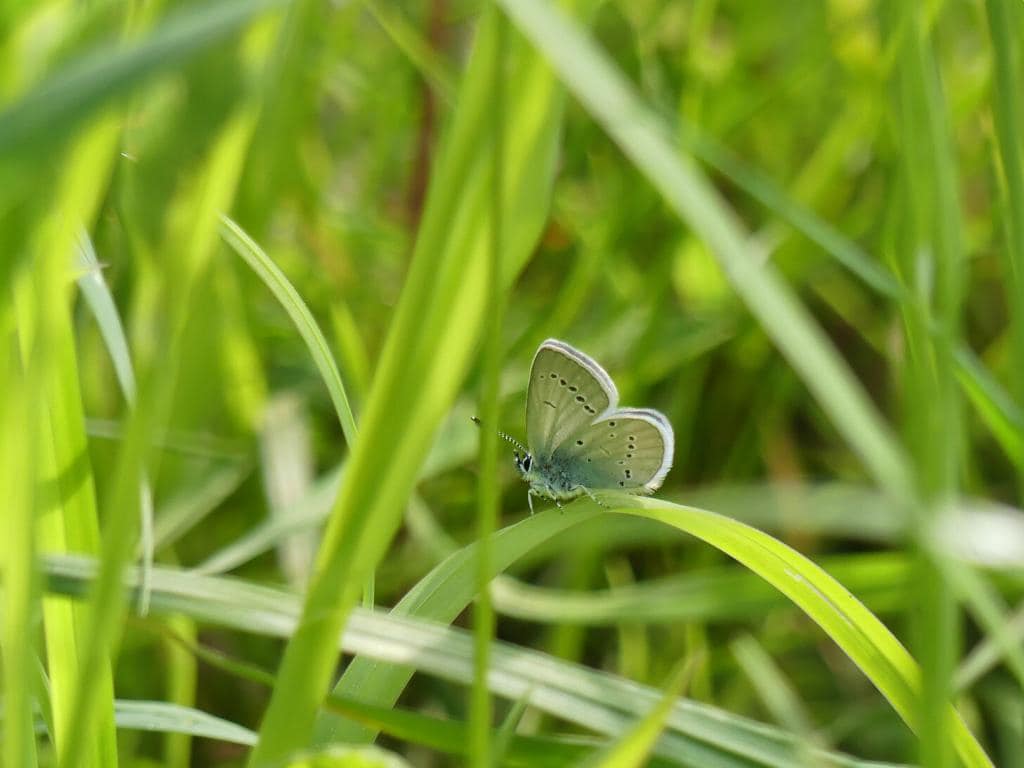
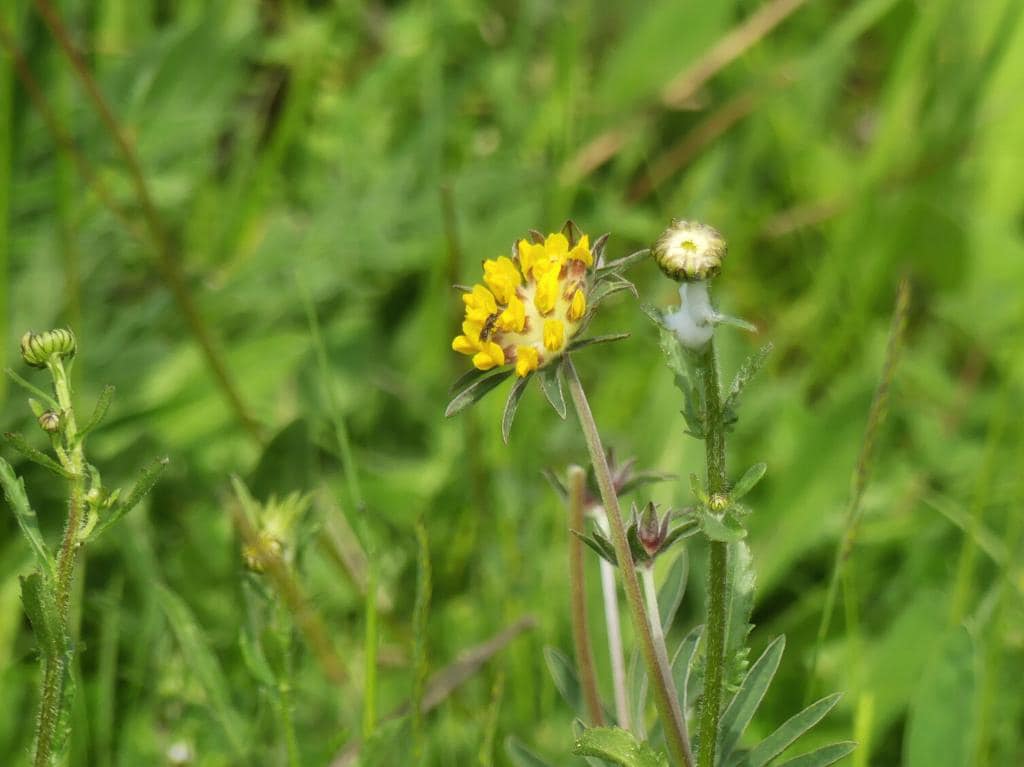
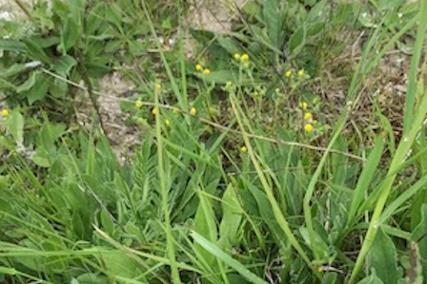
And Common Wintercress (right) - a new species for our wood..
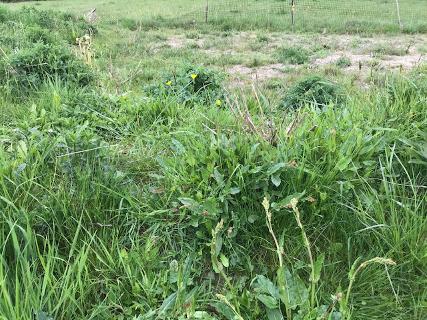
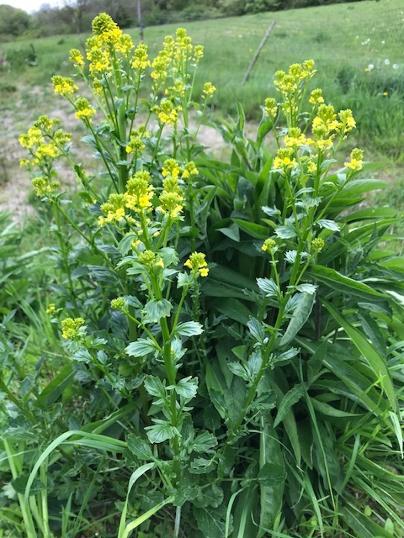
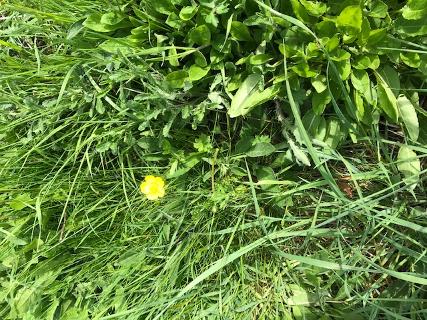
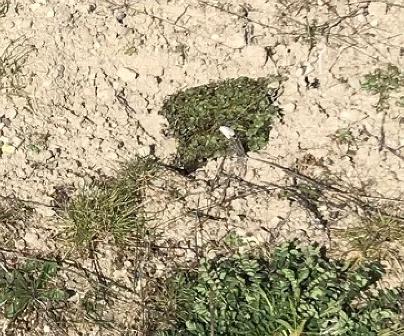
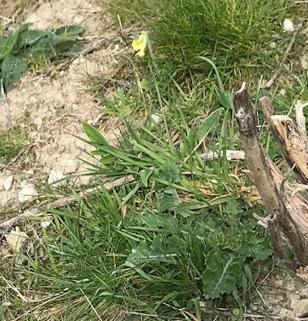
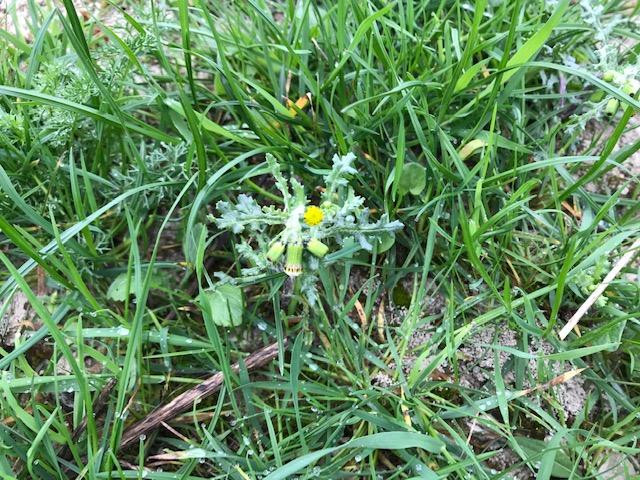
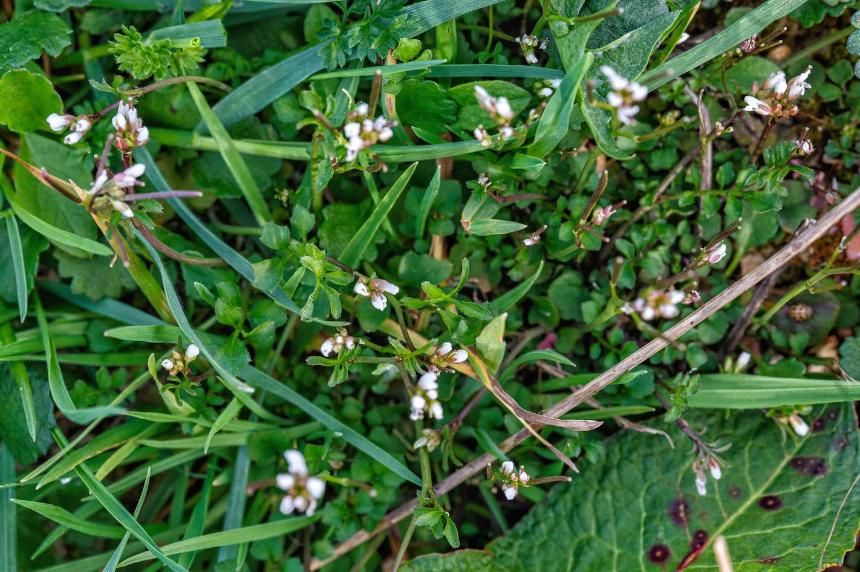
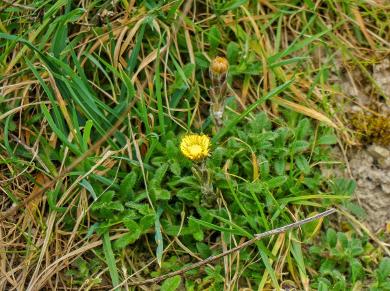
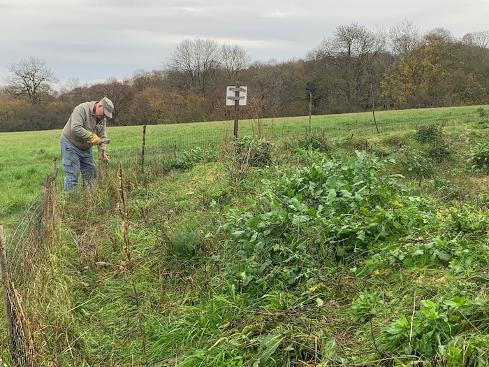
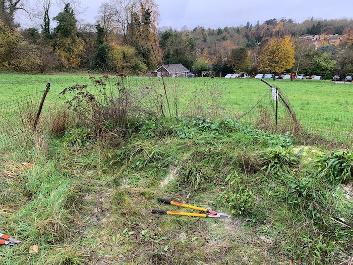
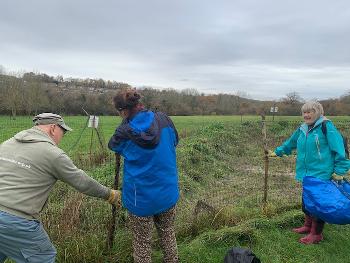
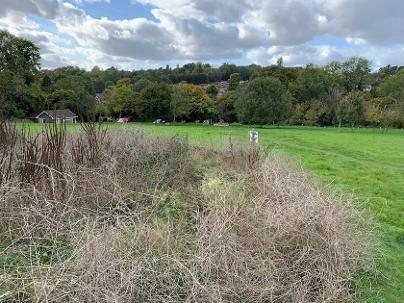
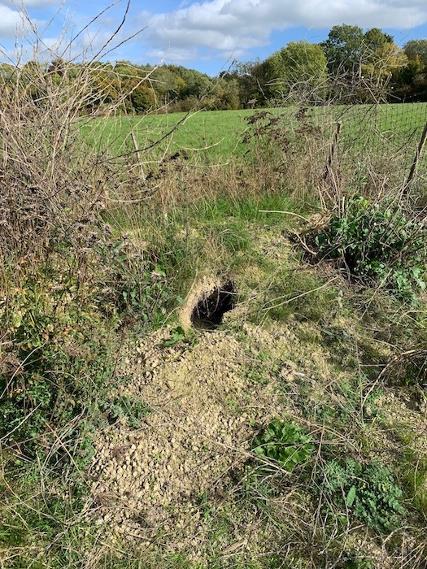
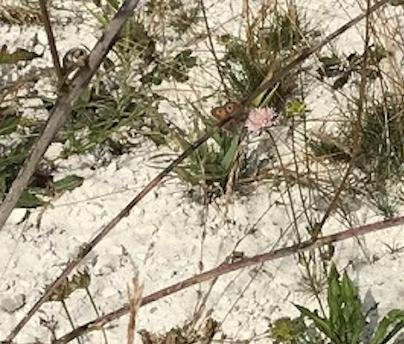
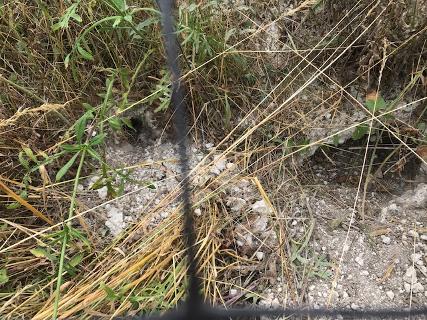
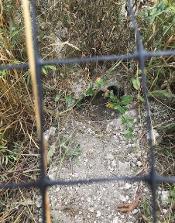
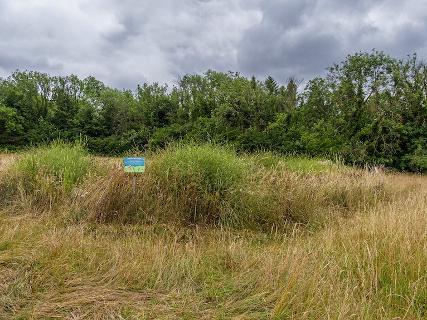
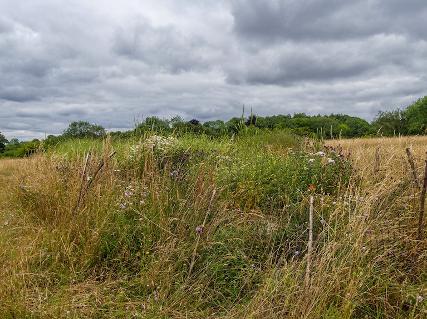
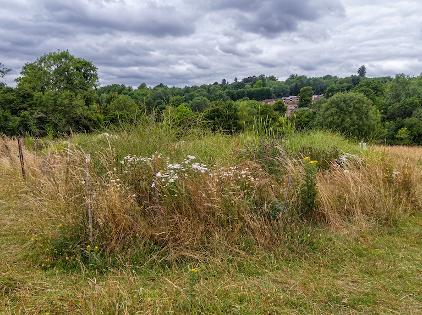
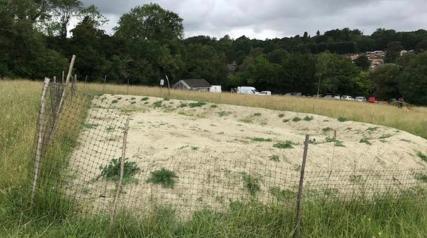
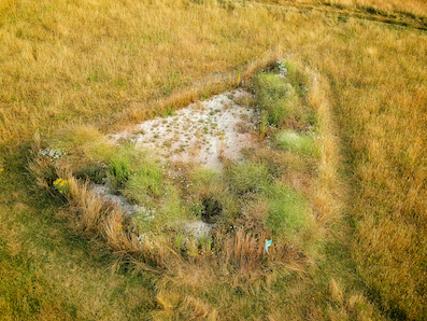
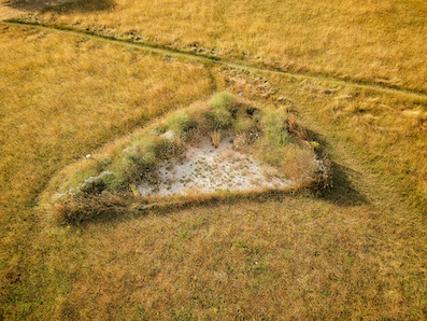
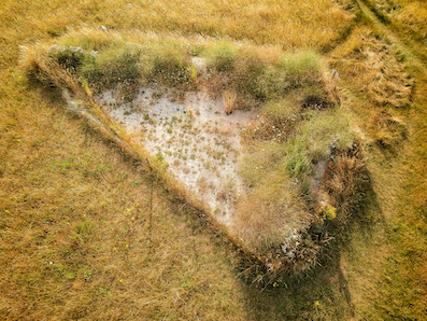
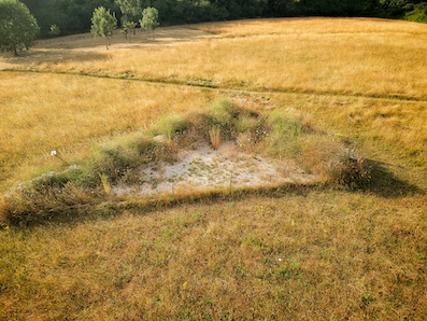
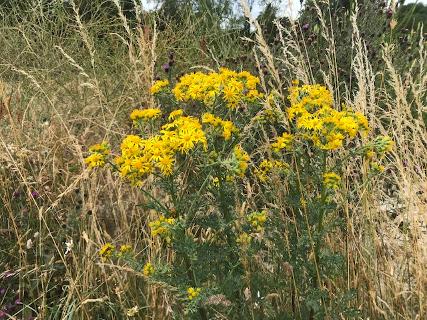
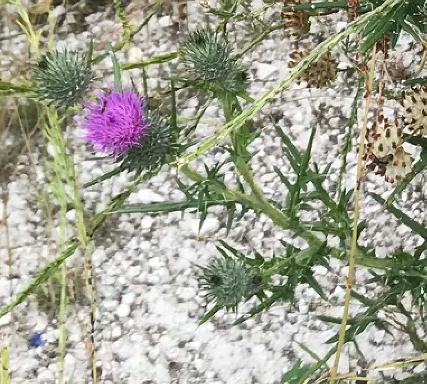
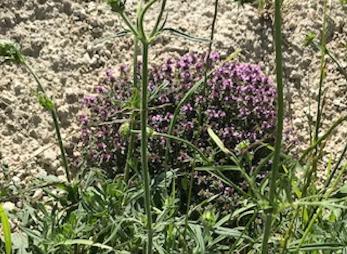

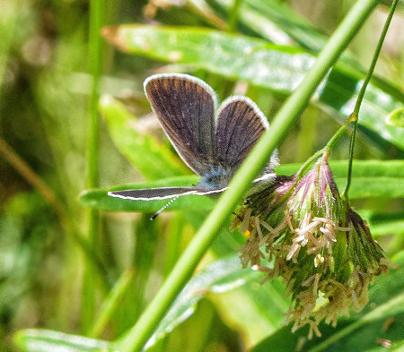
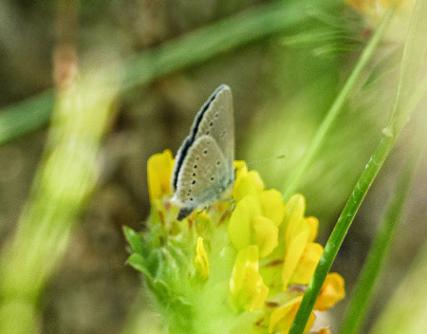
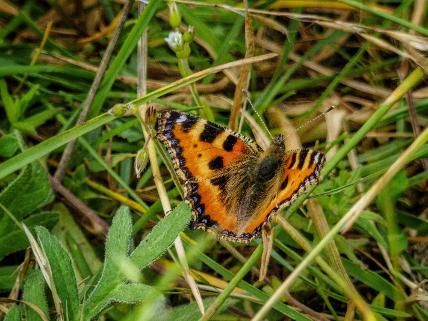
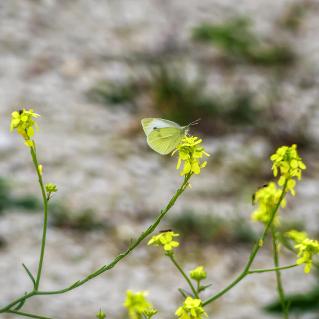
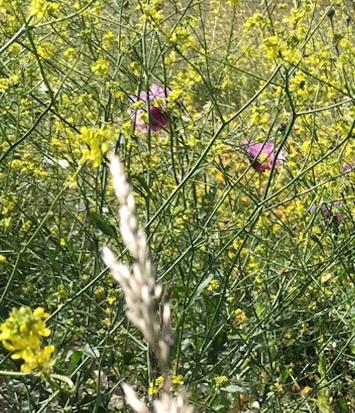
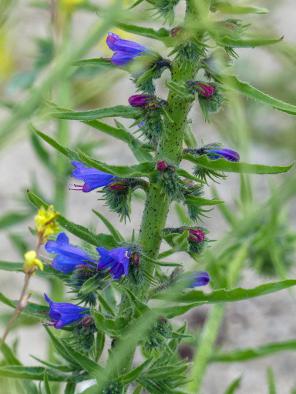
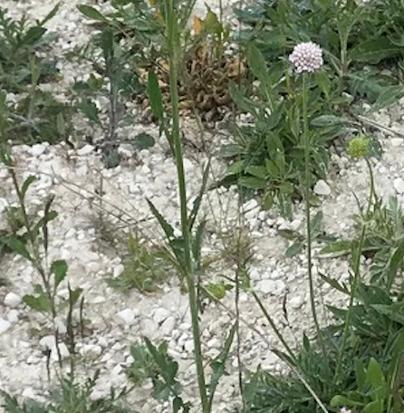
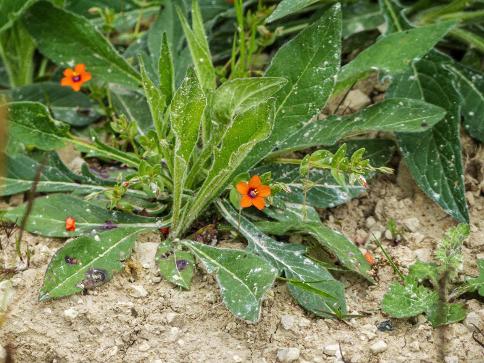
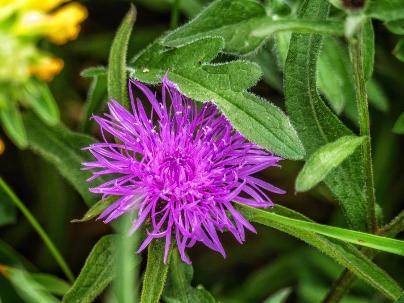
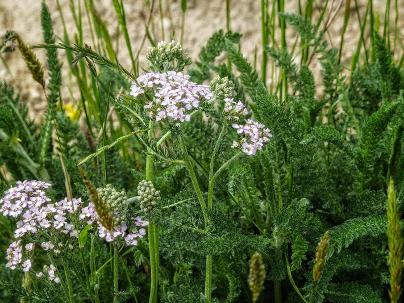
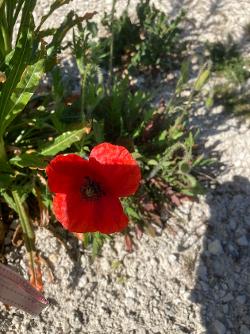
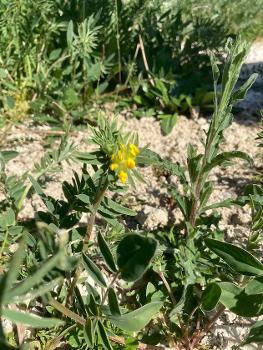
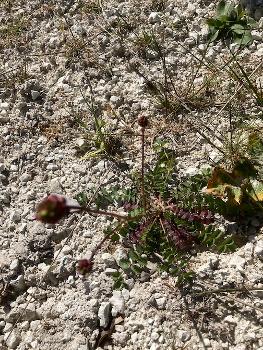
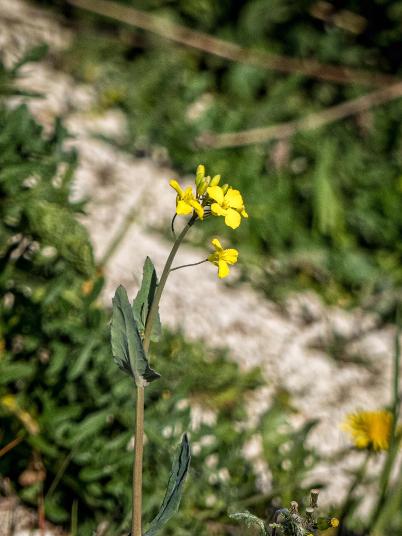
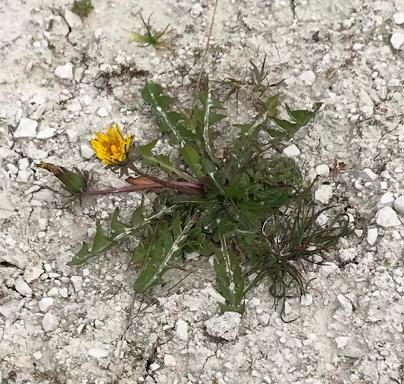
| ||||||||||||||||||||||||||||||||||||||||||||||||
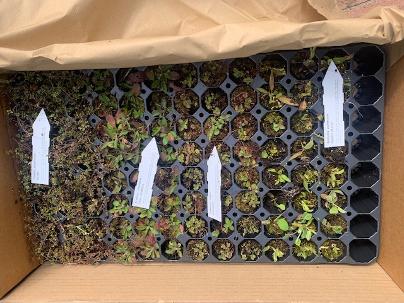
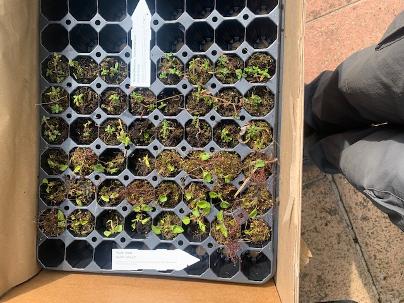
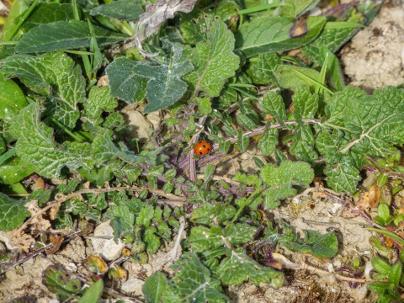
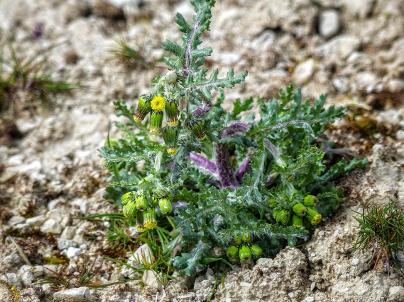
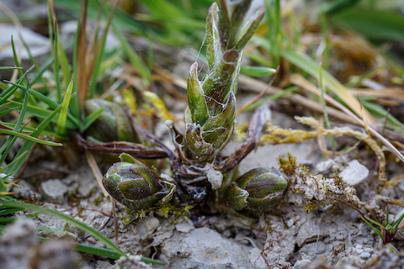
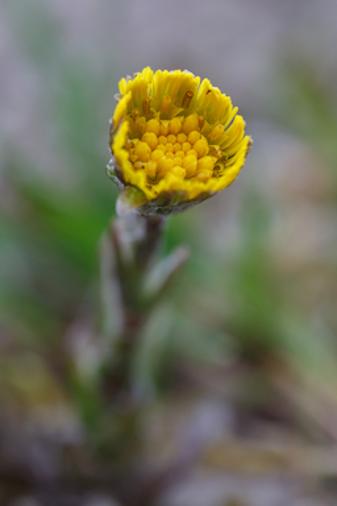
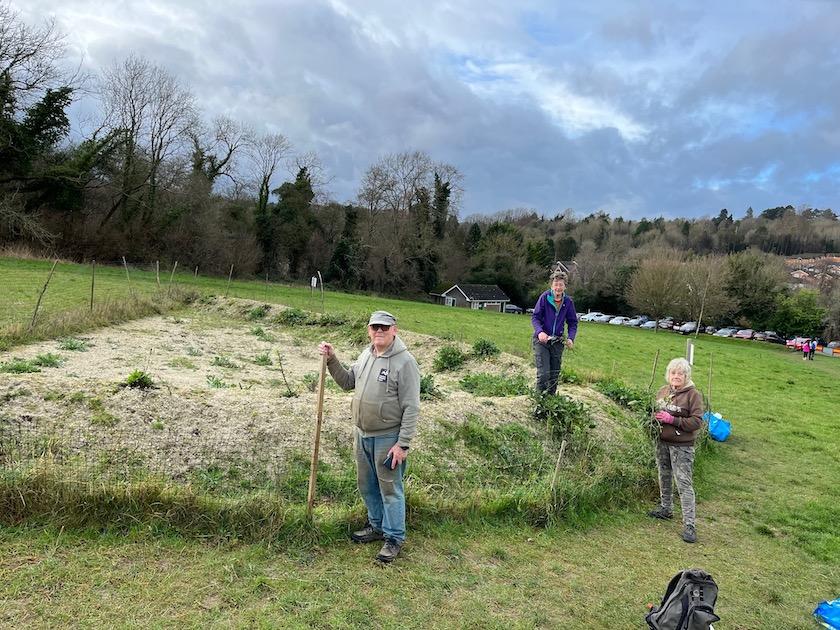
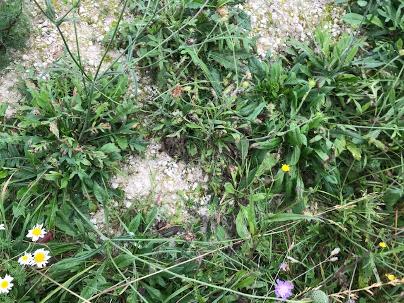
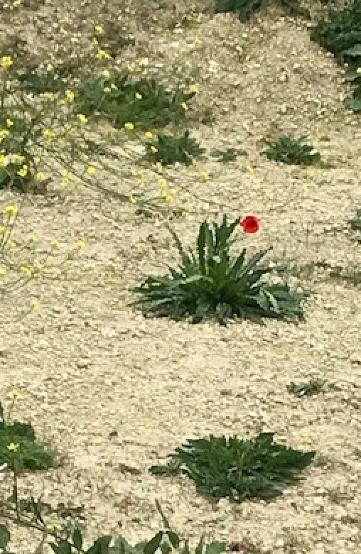
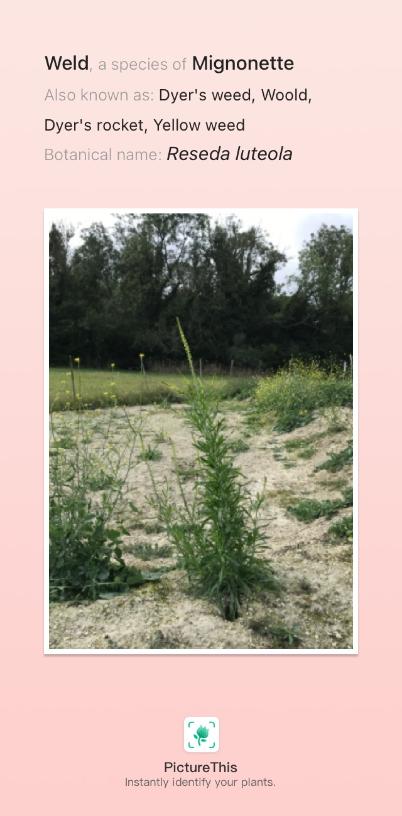
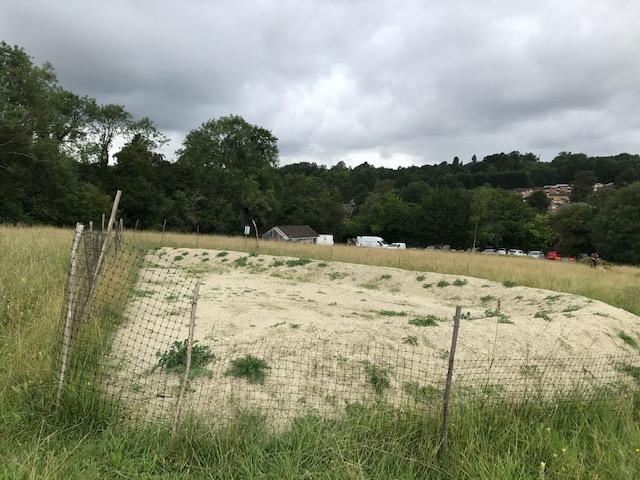
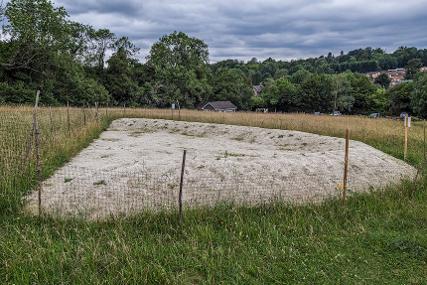
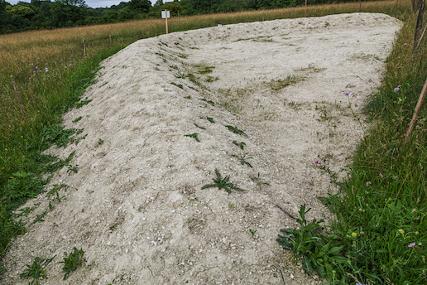
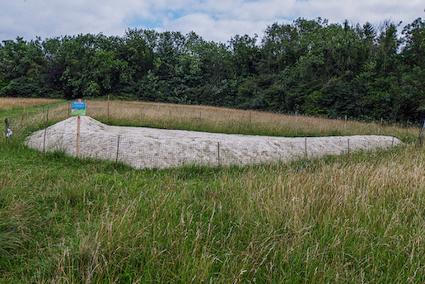
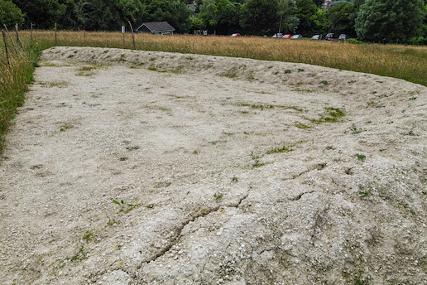
Butterfly Bank - first flowers, June 2021
This Ox-eye Daisy (right) was photographed by Ruth Budd on 11 June 2021 - the first flower to appear on the Butterfly Bank. Two more Ox-eyes appeared followed on 24 June by this Birds Foot Trefoil (below) - again photographed by Ruth.
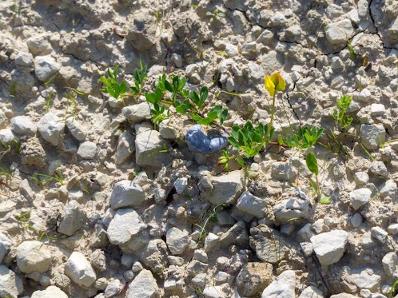
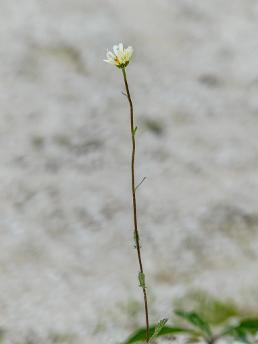
Butterfly Bank greening after the rain 25 May 2021
The photos below taken by Ruth Budd show the response of the BB to a few days of heavy rain. The seeds have begun to sprout and even a worm has come to visit.
Fencing the Chalk Bank 9 May 2021
The ridge fence on the top of the bund had been knocked down so FSW decided to replace it with a perimeter fence. BB supplied some extra fencing as we had run out and the FSW workdays team erected this and relocated our earlier fence so that the whole bund was enclosed. This was done on a workday and is reported in full on the Workdays page.
The photograph shows the team working in the distance.
The past fortnight has been very dry and the FSW have been watering the plants. However, the last 2 days have seen a lot of rain and unless the drought resumes it should not be necessary to water much from now on.
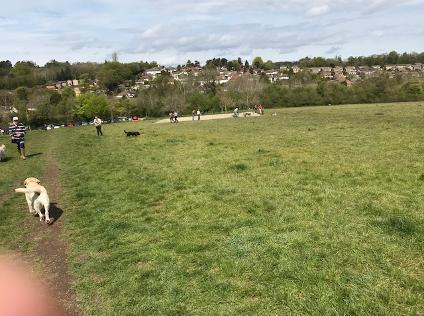
Planting the Chalk Bank 25 April 2021
A number of FSW volunteers were ready and waiting by the toilet block when Laura Suckley from Wild London arrived in her camper van with the plug plants and trowels and dibbers. We opened the height barrier at the entrance to the car park to let her through. She drove up to the chalk bank and unloaded everything then advised us on how the planting should be done. The plants were to be spaced out over the bund and the flattened area and after that was finished she would give us all seed to sow. The plug plants comprised Birds-foot Trefoil, Cowslip, Scabious, Knapweed, Ox-eye Daisy, Thyme and Yarrow. We set to work, assisted after a while by an 8 year old girl and her mum who readily joined in.
While we were planting Neale undertook another job - the provision of a low fence along the top of the bund to deter dogs and people from running or walking over it.
Once the plugs were all planted we each took handfuls of seed and strewed it over the surface, raking it in with our feet to prevent it being blown away by the wind. A full list of all the plant and seed species is given in the link below.
The final job was watering in al the plants and seeds. Several folks had brought watering cans and Laura supplied a few more. Laura also had a large container of water but most of it had to be carried up from the toilet block. The weather has been very dry of late but Laura assured us that there would be no need for more watering for a while, even if the drought continued, as the plants are all very tolerant of dry conditions.
Many thanks to all who helped today and to those who took the photographs in the gallery below.

|
BB Wildflower seed mix & plug plants - external Y2v2.pdf Size : 27.868 Kb Type : pdf |
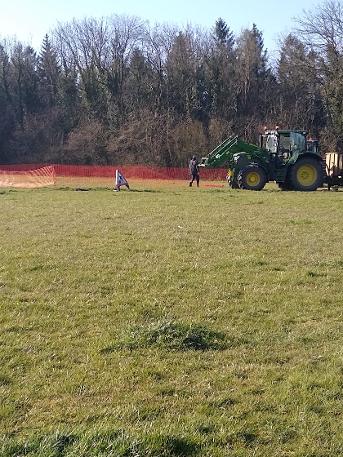
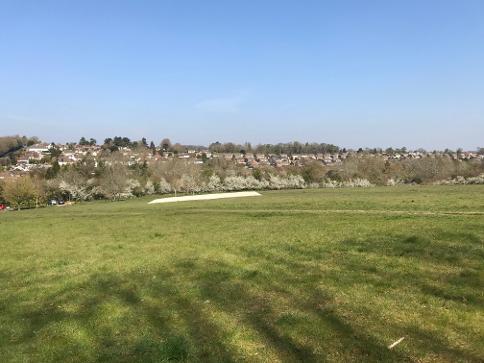
Creating the Chalk Bank 19 April 2021
I arrived in the car park field at 8.30am and found an assortment of vehicles already there. Steve Bolton, from Butterfly Conservation, and his two helpers were setting out the area on the ground where the bund and flat area were to go.
Once that was done the area was surrounded by a temporary plastic fence then the digger was used to remove the turf layer. The turf was then moved to create the bund and the digger was used to run over it to firm it before returning to scrape up subsoil which was spread over the new bund. The digger bucket was used to smooth out the soil over the bund surface.
Two large tipper lorries arrived with their loads of fine chalk and tipped it in piles on to the flat scraped area. The chalk was transferred to the bund to cover it up to 30cm deep and the flat area was then smoothed out. I left at 11.48am before the work was actually finished but there was little more to do other than tidy up.